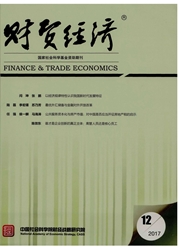

 中文摘要:
中文摘要:
本文基于新凯恩斯附加预期的IS曲线,构造经济增长周期波动的一致合成指数代表综合产出缺口序列,选取状态空间模型估算预期变量,采用时变概率的马尔科夫区制转移(MS—TVTP)模型研究了中国经济增长周期波动的阶段运行特征与驱动机制。结论认为:产出缺口预期对经济周期波动的影响显著为正,实际利率变量对经济周期波动的影响显著为负,且两者的影响在不同区制具有明显的非对称特征。平滑概率和转换概率的估计结果显示,金融类和投资类先行指数是中国经济增长周期在各状态间转换的重要驱动因素。相对于促进经济回升,货币政策对经济的“降温”更有效。在经济回落时投资对经济增长周期波动的影响较为迅速,但由于投资周期和固定资本形成等原因,经济回升时投资发挥作用的滞后期明显加长。稳定预期并释放改革红利,实施宏观审慎管理平抑经济周期波动是保持中国经济稳定增长的重要途径。
 英文摘要:
英文摘要:
Based on the Keynesian IS curve and MS-TVTP model, this paper studied the phase operating characteristics and driving mechanism of Chinese business growth cycle fluctuation by specifying output gap series through coincident composite index and estimating expectation variable through state space model. The results are that the influences of output gap expectation on business growth cycle are positive and the effects of real interest rate are negative. Both of them exert asymmetric features in different regimes. The estimation results of smoothed probability and transition probability show that the financial and investment composite indexes are the significant driving factors of business growth cycle switch among different regimes. Compared to promoting economic growth, the monetary policy plays a more effective role in decelerating the growth speed. Although the speed of investment's influence during the economic downturn phase is rapid, the lag of its effects is lengthened due to the investment cycle and capital formation. Releasing reform dividend through stabilizing expectation and reducing the fluctuation of business cycle by employing the macro prudent government are important ways to maintain the steady growth of Chinese economy.
 同期刊论文项目
同期刊论文项目
 同项目期刊论文
同项目期刊论文
 期刊信息
期刊信息
